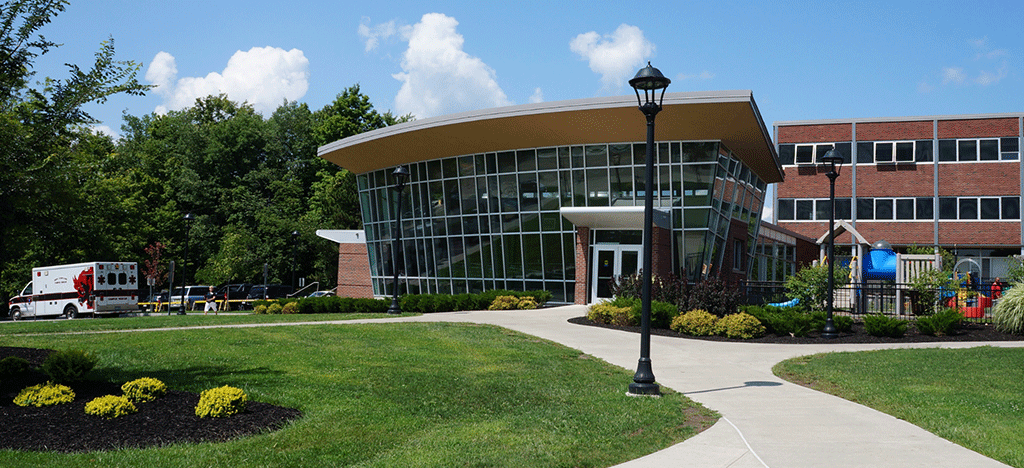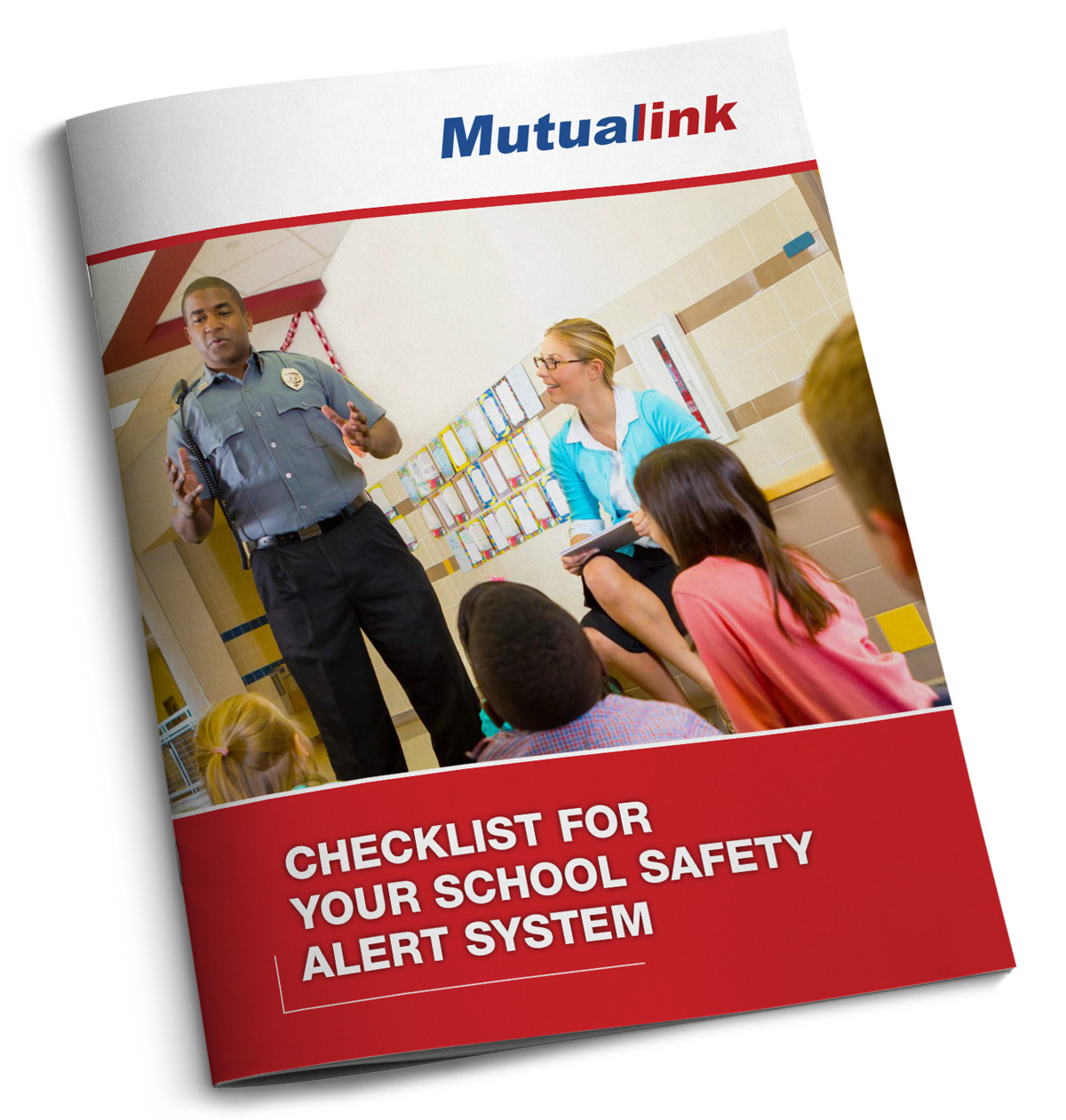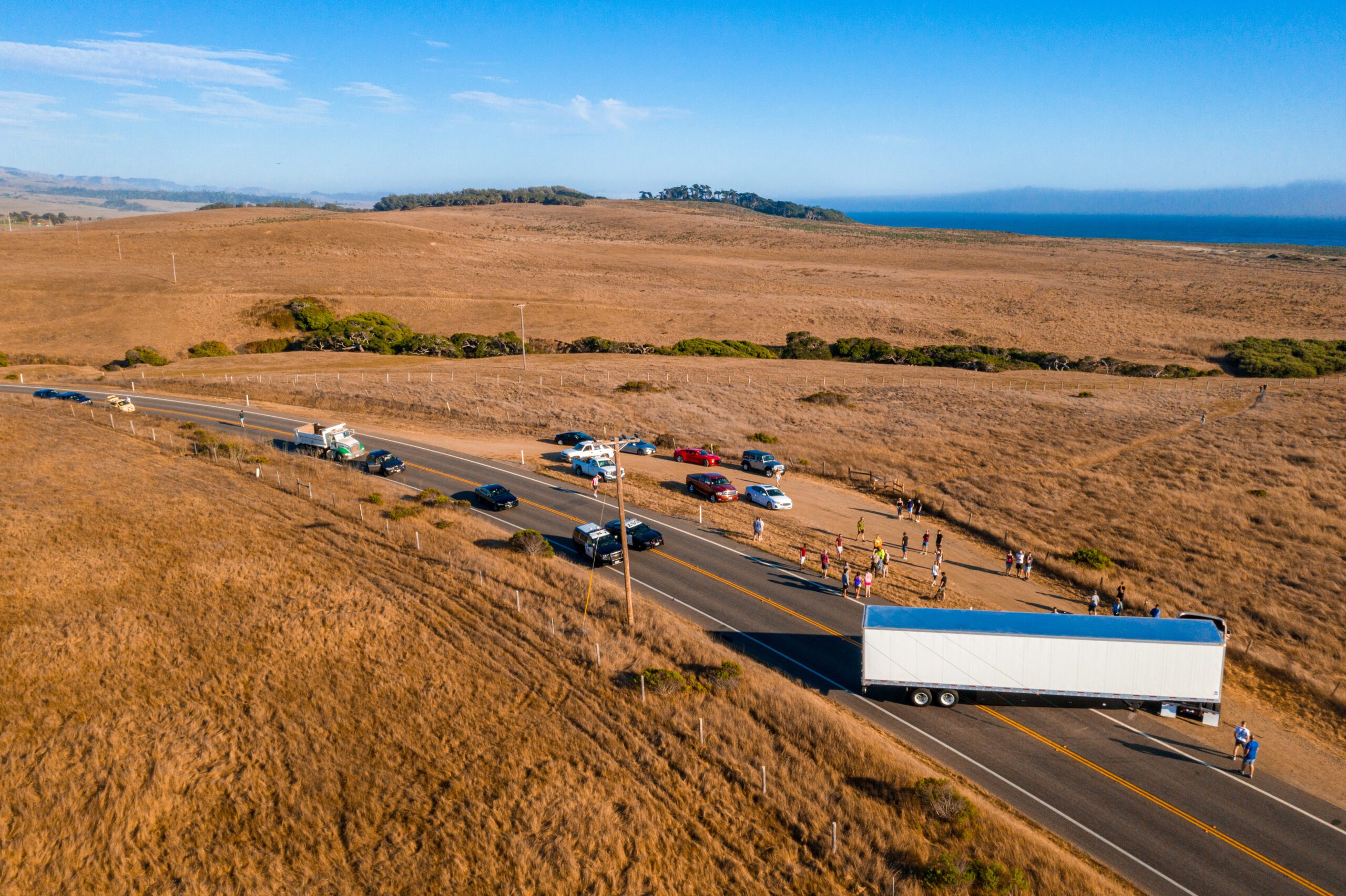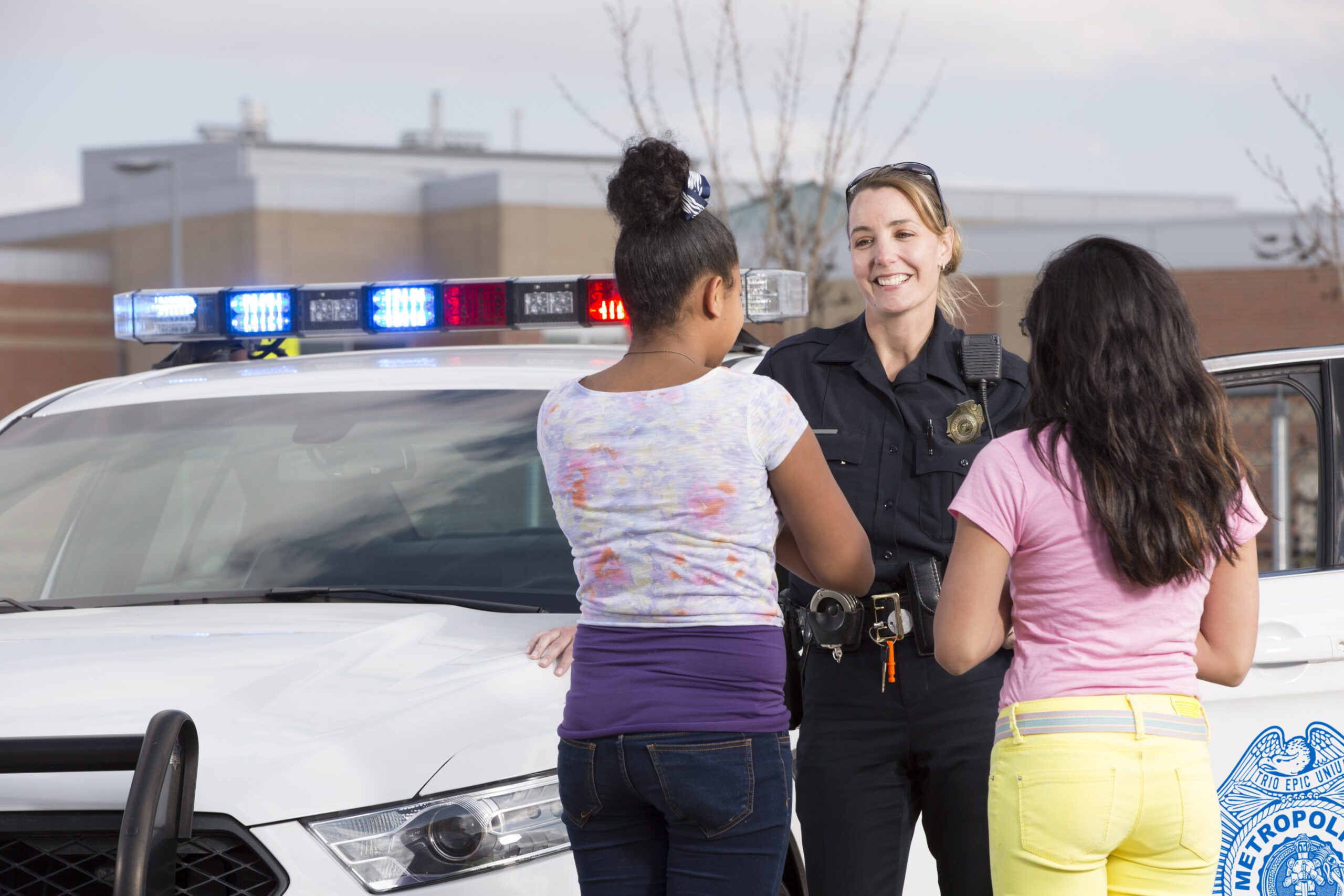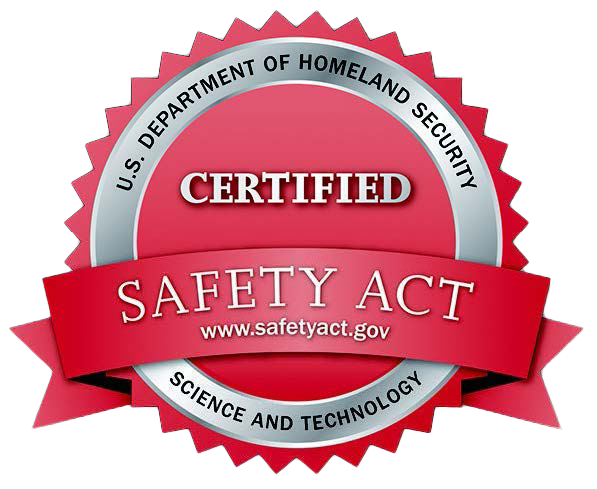The Department of Homeland Security launched SchoolSafety.gov to promote awareness and share best practices to build a strong school safety alert system.
By: Mutualink Staff
SchoolSafety.gov was launched by the federal government in 2020 to provide schools and districts with actionable recommendations to create a safe and supportive learning environment where students can thrive and grow. This one-stop safety shop has multiple resources for schools on a range of topics including:
- Emergency Planning
- Threat Assessment and Reporting
- Targeted Violence
- Mental Health
- Physical Security
After the school shooting in Parkland, Florida in March 2018, the government established the Federal Commission on School Safety by Executive Order to make meaningful advancements in keeping students safe. The Department of Homeland Security also released its 2019 strategy for targeted violence that defines ways that the Department will enhance security with increased preparedness, promoting community readiness, and enhancing defensive measures. SchoolSafety.gov grew out of this effort to establish a centralized hub where new techniques in protective practices and best practices can be shared across the country.
SchoolSafety.gov includes:
- A Secure Information Sharing Community for school personnel to share school safety ideas, best practices, emergency operations plans (EOPs), and tactics in a protected environment.
- The School Safety Readiness Tool, is an assessment that assists users in evaluating their respective school’s safety posture. After taking the assessment users are provided with an action plan, other resources, and grant opportunities specific to individual needs.
- A variety of resources and best practices on school safety topics to assist with building awareness within the school community to promote vigilance and build capacity to respond to incidents, including school shootings.
Increasing Threats to Schools
SchoolSafety.gov can be a good place to start when addressing the rising risk of school violence. According to the Report on Indicators of School Crime and Safety: 2020, published by the Department of Education and the Department of Justice, school shootings were substantially more prevalent in 2017 – 2019 than in previous years:
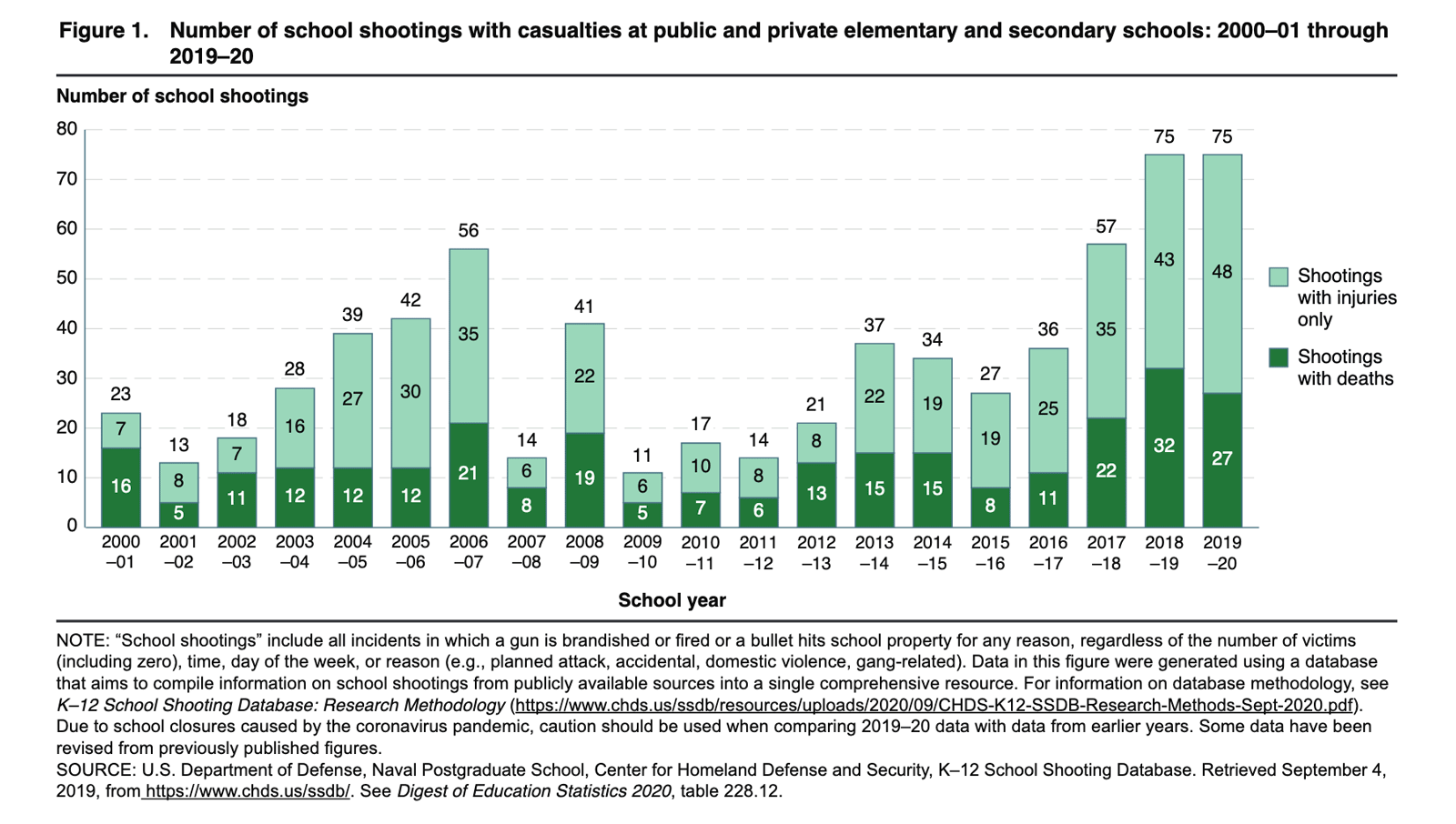
Schools have responded to this increased threat environment with a variety of procedures to increase safety. According to the National Center for Education Statistics, in the 2017–18 school year, 95 percent of public schools reported that they controlled access to school buildings by locking or monitoring doors during school hours.
Other measures reported by public schools included the use of security cameras to monitor the school (83 percent) and a requirement that faculty and staff wear badges or picture IDs (70 percent). These three measures saw dramatic increases in adoption over the past two decades:
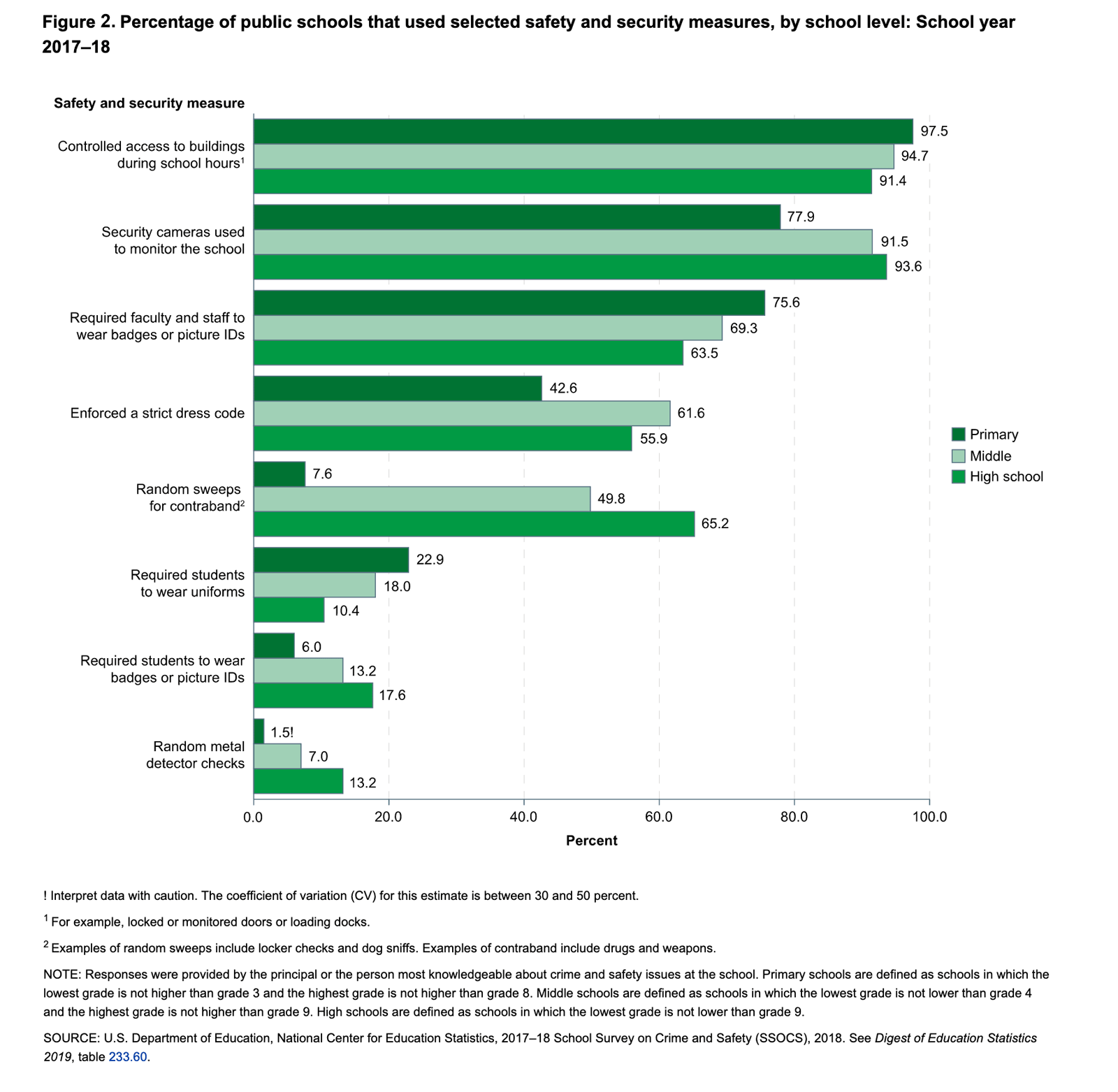
These measures are important pieces of an effective school alert system. But the heightened risk environment is affecting students and disrupting the educational experience. The Centers for Disease Control and Prevention (CDC) conducts an annual Youth Risk Behavior Survey. The 2019 survey (the most recent available, prior to the pandemic), highlighted some sobering findings:
More than seven percent of high school students had been threatened or injured with a weapon (for example, a gun, knife, or club) on school property one or more times during the 12 months before the survey.
- About one in five high school students reported being bullied on school property in the last year.
- Eight percent of high school students had been in a physical fight on school property one or more times during the 12 months before the survey.
- Almost nine percent of high school students had not gone to school at least one day during the 30 days before the survey because they felt they would be unsafe at school or on their way to or from school.
All the statistics above are pre-pandemic. While returning to the classroom is a good thing for most students and parents, DHS has released a public awareness bulletin focused on the threat of school violence as the United States “returns to normal.”
The bulletin seeks to raise awareness that the pandemic exposed many children to multiple risk factors.
DHS believes that “the threat of targeted violence in schools will remain elevated as more children return to school full-time.”
To learn more about improving school safety click here.
The Only Safety Technology Trusted by DHS and Safety Act Certified
The DHS has certified Mutualink technology. As part of the Homeland Security Act of 2002, Congress enacted the Support Anti-Terrorism by Fostering Effective Technologies Act (SAFETY Act) of 2002. Mutualink is the only multimedia interoperable communications product that is Safety Act certified by DHS and is on DHS’s approved products list.
To receive SAFETY Act Certification, DHS must conclude that the technology will perform as intended, conforms to the seller’s specifications, and is safe for use as intended. Mutualink works with many government agencies to improve communications and safety with innovative collaboration technology.
Mutualink also manages FEMA’s Interoperable Gateway System (IGS), which is part of the U.S. Government’s National Continuity Program (NCP). IGS is deployed throughout the 10 FEMA Regions and Caribbean Islands, with expansion planned throughout the Pacific Islands. The primary mission of the IGS is to provide resilient communications as part of the COG/COOP (Continuity of Gov’t/Continuity of Operations) programs in case of a national disaster.
Checklist for Your School Safety Alert System
Learn more about 6 critical elements to protect your schools.
The School Safety Solution Trusted by Schools and FERPA Compliant
Mutualink technology is FERPA compliant, which is a critical issue for schools. A FERPA-compliant solution for video access requires implementing a system that allows for instant sharing when an emergency necessitates, but otherwise blocks police access to school video. Mutualink’s patented emergency incident-based, secure video sharing solution uniquely satisfies this requirement while tying together all pieces of a school safety alert system.
Compliance is achieved through Mutualink’s peer-based invitation and acceptance-based interoperability platform. The platform enables on-demand, secure sharing of video communications between entities, such as a school and public safety agency. This connection happens only when a school voluntarily starts an incident and sends an invitation to the other party to join the session.
Incident invitations to an outside agency can be manually sent or auto-initiated (such as when a panic button is pushed) by a school in an emergency. Legislation such as Alyssa’s Law in Florida has spurred more schools to adopt such panic button apps.
All data schools choose to share is secured with AES-256 Encryption. Invitations are dynamically-generated encrypted incident keys sent within an encrypted connection that enable an invited party to join an incident session. The invitation lasts only as long as the incident session lasts. Once a session is completed, no residual IP address, system login or access credentials, or other means of accessing the video system remains.
LNK360™ – Connecting Safety Measures for Real-Time Protection
Mutualink’s LNK360TM is the leading interoperability solution for smart communities, public safety agencies, schools, private enterprise security, hospitals, and critical infrastructure. Our technology and quality of service enable first responders to customize and configure advanced solutions that provide rich, real-time data during emergencies.
The LNK360™ platform is simple to deploy. It uses a school’s current communication assets to share on-demand, secure radio and video with law enforcement instantly with the push of a button. It connects with others in the district and across law enforcement agencies in the broader Mutualink public safety ecosystem. This real-time protection can make all the difference – a timely intervention versus a delayed response that results in tragedy.
The Most Experienced Partner for Schools
The marketplace for public safety technology has become more crowded in recent years. Resources such as SchoolSafety.gov have raised awareness, and the availability of government funding has attracted a number of startup companies promising to power school safety alert systems. Many of these new companies don’t understand the unique requirements of first responders and lack experience working in the public safety market.
When implementing recommendations for improving school safety it’s vital to have an experienced and trusted partner. With over 3,000 deployments connecting over 10,000 public safety entities, Mutualink technology has been proven many times over to protect students and connect communities. The two largest public safety networks in the country, FirstNet and Verizon Frontline, both depend on Mutualink to ensure the interoperability of their solutions.
Regrettably, these are dangerous times. Mutualink is trusted by hundreds of schools and police forces nationwide. Let us put our certified technology and years of experience to work for your school to implement many of the recommendations of SchoolSafety.gov.
For more information, request a free demonstration.
